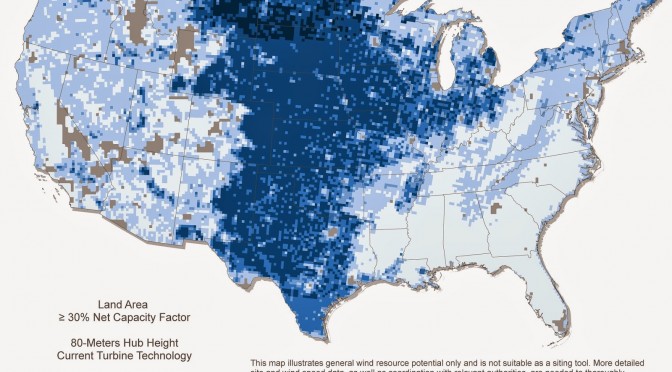The next-generation of larger wind turbines can unlock previously untapped wind resources in regions about one-fifth of the United States, making wind energy capable of generating electricity in all the 50 U.S. states, said a report released here Tuesday.
U.S. Energy Secretary Ernest Moniz released the Enabling Wind Power Nationwide at the opening session of the WINDPOWER 2015 Conference and Exhibition, an annual event held by American Wind Energy Association (AWEA).
“Wind generation has more than tripled in the United States in just six years, exceeding 4.5 percent of total generation, and we are focused on expanding its clean power potential to every state in the country,” said Moniz. “By producing the next generation of larger and more efficient wind turbines, we can create thousands of new jobs and reduce greenhouse gas emissions, as we fully unlock wind power as a critical national resource.”
Moniz expected wind could provide five-fold what it provides today, or a goal of one trillion kWh/year in America, in a decade or a bit more.
Taller wind turbine towers of 110 and 140 meters and larger rotors can more efficiently capture the stronger and more consistent wind resources typically found at greater heights above ground level, compared with the average 80 meter wind turbine towers installed in 39 states today, said the report.
If the average height of wind turbine towers can be raised to 110 meters or 140 meters, the land area with physical potential for wind deployment in the U.S. is expected to increase 54 percent or 67 percent separately, it added.
“This report is great news for consumers, job-seekers, rural communities and many others in these states that have yet to fully benefit from American wind power,” said AWEA CEO Tom Kiernan in a statement.
“Wind turbine technology has advanced in just a few decades from the Model T era to more like that of a Tesla Model S,” Kiernan added.
Driven by technology improvement, government policy and mass installation, wind has become the fifth largest resource in the U. S. electricity portfolio, as the cost has fallen dramatically by 58 percent in the last five years. In 2014, it attracted private investment of 23 billion U.S. dollars, adding 23,000 new jobs, said the AWEA.
The largest concern for the development of the U.S. wind industry still comes from the uncertainty of the U.S. government policy. Failure to extend production tax credit (PTC) by the Congress in 2012 caused the installation of wind power to fall by 92 percent in 2013. PTC will provide companies to enjoy tax credit in ten years based on their investments in wind power sector.
“The future success of the wind in the United States and the jobs it sustains depends largely on policy makers implementing reasonable policies that help continue the growth of the U.S. wind energy,” said Lisa Davis, member of the Managing Board of Siemens at the opening session.
“We need long-term energy policy in the United States…Until that happens we need the congress to extend the production tax credit,” said Davis.
But entrepreneurs are quite confident about the development of wind power in the U.S. and the world, driven by the market, technology and governments determination to fight climate change.
“I am quite optimistic about the future development of wind energy,” Ming Lin, deputy manager of Market Development Center of Guodian United Power, one of China’s major wind energy enterprise, told Xinhua at the exhibition.
“Many countries have clear renewable energy development targets, especially wind,” he said. After several years of development, Lin ‘s company has improved the reliability of wind turbines and reduced prices, making their products very competitive.



